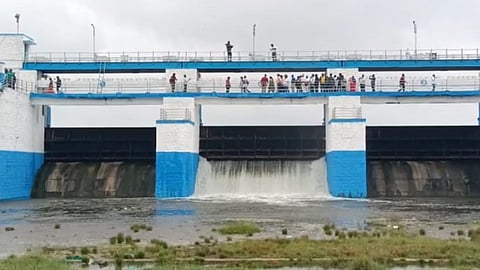

CHENNAI: With the first spell of the northeast monsoon lashing the city resulting in waterlogging in some parts in north Chennai, water managers are delighted as the rains started to brim the lakes that supply drinking water to the metropolis.
According to Chennai Metropolitan Water Supply and Sewerage Board (Metro Water) data, the five lakes - Poondi, Cholavaram, Redhills, Kannankottai Thervoykandigai and Chembarambakkam - had a combined storage of 6,629 mcft of water on October 31 and 6,702 mcft on November 1.
On November 2, the water storage rose to 6,986 mcft, which is more than 350 mcft increase in just two days. This is mainly due to the rains around the lakes. Notably, Redhills lake had received 142mm of rain and Chembarambakkam received 95mm of rainfall in 24 hours up to Wednesday morning.
It may be noted that the water resource department after using flood forecast system created by the Commissionerate of Revenue Administration, has released water from the lakes before the onset of the monsoon so that to avoid flooding in case of excess rainfall.
As per the data, Poondi and Cholavaram lakes had a storage of 818 mcft and 212 mcft respectively. Redhills and Kannankottai Thervoykandigai had a storage of 2,692 mcft and 500 mcft while Chembarambakkam had 2,764 mcft of water.
Interestingly, the amount of sewage treated at the treatment plants run by the Metro Water has also increased due to the rains as runoff water from roads enter underground sewage system.
Before the rains, sewage pumping stations were treating only 600 million litres 650 million litres of sewage of which the sewage treatment plants treated around 600 million litres.
However on October 31, two days after the monsoon was officially declared set, the amount of sewage pumped rose to 770 million litres. Of the total pumped sewage, treatment plants had treated 700 million litres.
"We have a capacity to treat 1,000 million litres per day. After rains intensified on November 1, the plants are treating more than 700 million litres per day," an official said.
Visit news.dtnext.in to explore our interactive epaper!
Download the DT Next app for more exciting features!
Click here for iOS
Click here for Android